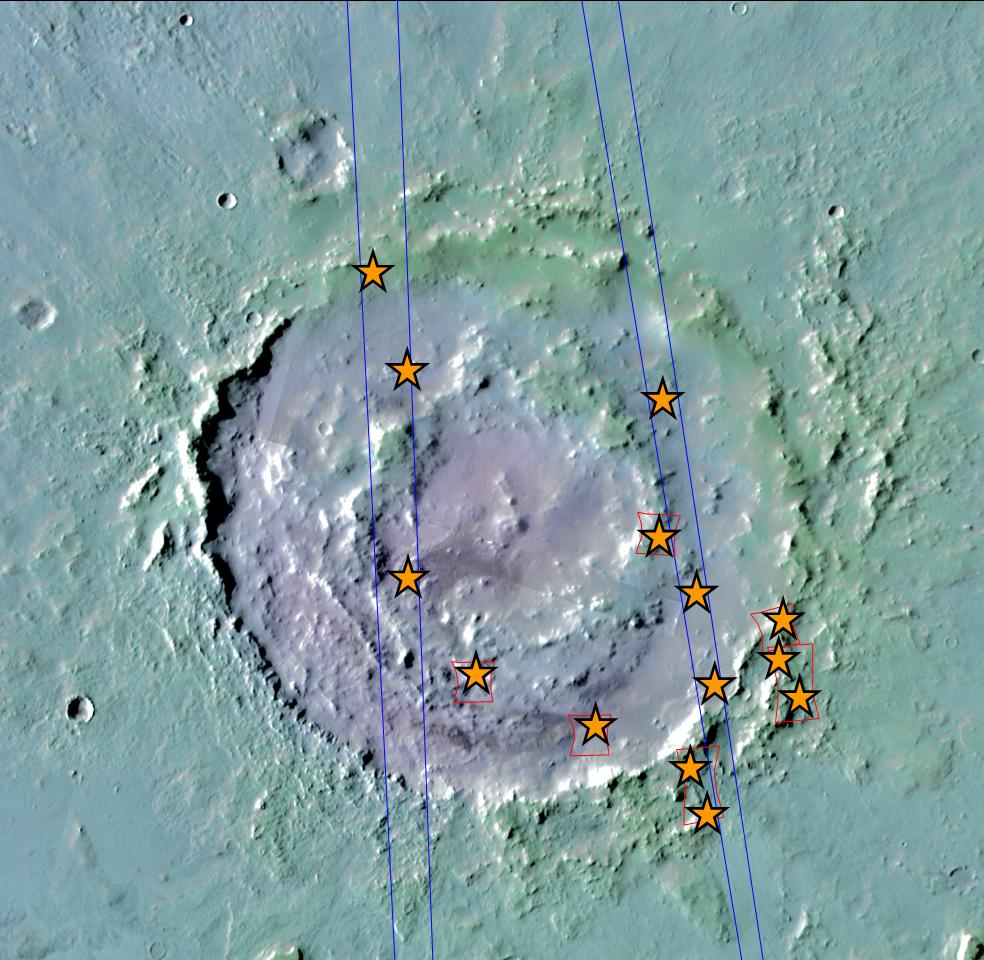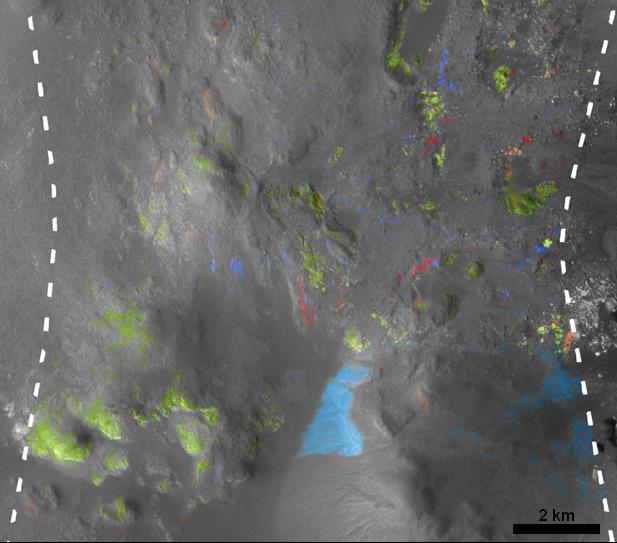Press Release
New Clues Suggest Wet Era on Early Mars Was Global
Thu, 06/24/2010 - 14:22
A phase in the early history of Mars with conditions favorable to life occurred globally rather than just in the south, new findings from the north suggest.
Southern and northern Mars differ in many ways, so the extent to which they shared ancient environments has been open to question.
In recent years, the European Space Agency’s Mars Express orbiter and NASA’s Mars Reconnaissance Orbiter have found clay minerals that are signatures of a wet environment at thousands of sites in Mars’ southern highlands, where rocks on or near the surface are about four billion years old. Until this week, no sites with those minerals had been reported in the northern lowlands, where younger volcanic activity has buried the older surface more deeply.
French and American researchers report in the journal Science this week that some large craters penetrating younger, overlying rocks in the northern lowlands expose similar mineral clues to ancient wet conditions.
“We can now say that the planet was altered on a global scale by liquid water about four billion years ago,” said John Carter of the University of Paris, the report’s lead author.
Other types of evidence about liquid water in later epochs on Mars tend to point to shorter durations of wet conditions or water that was more acidic or salty.
The researchers used the Compact Reconnaissance Imaging Spectrometer for Mars (CRISM), an instrument on the Mars Reconnaissance Orbiter, to check 91 craters in the northern lowlands. In at least nine, they found clays and clay-like minerals called phyllosilicates, or other hydrated silicates that form in wet environments on the surface or underground.

